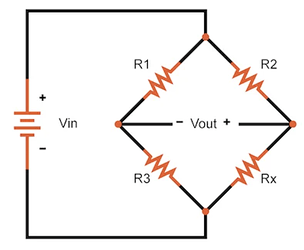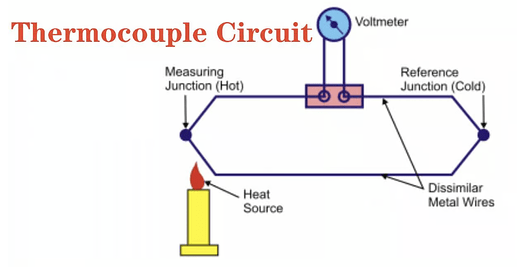The principle behind sensors usually consists of a voltage varying with the physical parameter being measuring and then reading that voltage. Popular sensors and principles are:
Wheatstone Bridge in Strain Gauges:
This starts with the principle that Resistance = resistivity x Length / Area. So the elongation of a wire (and reduction in cross-sectional area with poisson’s ratio) increases its resistance. If a current is applied to this wire, that means the voltage will also vary with length.
This wire/resistance is represented by “Rx” in the above wheatstone bridge and is fixed to the material whose strain is in question. So when strain occurs, “Rx” will change and also change the “Vout” voltage that is being read. Ideally, the voltage is zero at zero strain, meaning all resistors and Rx are equal, however it is more practical to have “R2” as a potentiometer to help calibrate the voltage due to inaccuracies of each component.
Here’s a good youtube video to help understand this set up:
Thermocouples:
The first principle is that for a material with a temperature gradient, electrons will accumulate at the cooler side of that material. Secondly, each material has a unique temperature gradient according to its conductivity. So by using two dissimilar metals, the accumulation of electrons at the colder region will also differ and can be read in the form of voltage to be correlated to a temperature.
In the diagram above, the point where temperature is being measured is called the Hot Junction and is also where the two dissimilar metals meet. The Cold Junction with a known ambient temperature is introduced so that a reference point is established for the readings being made.
Here is a good youtube video to better illustrate what’s happening!

